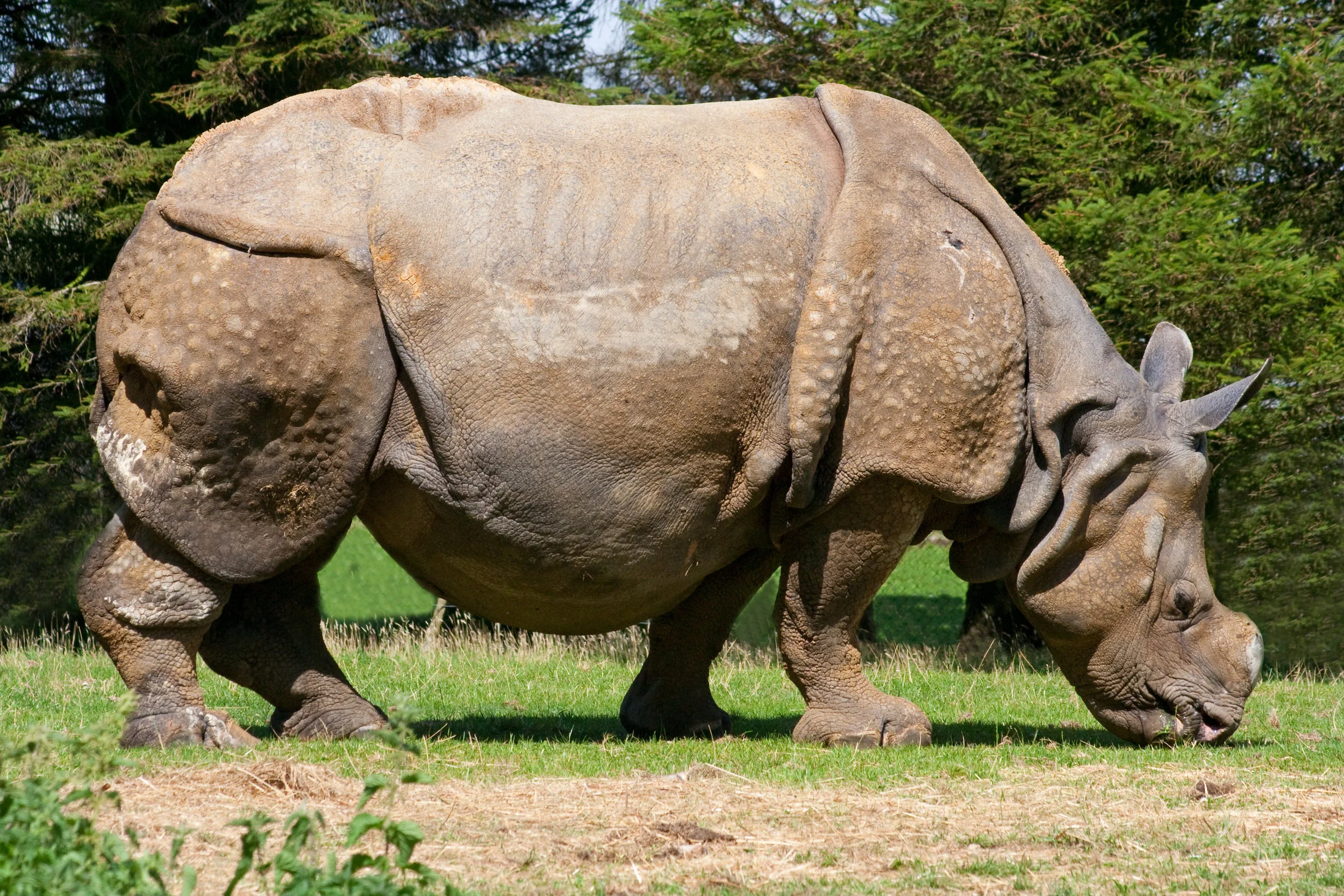Great Indian Rhino
"Kaziranga Knight" by Paschalis Dougalis (watercolours on LANA Cold pressed 300 g/m² paper)
“The “One horn Rhino” is an animal I know pretty well. I’ve sketched and painted it from life many times in Munich zoo, and I couldn’t resist to choose it when I saw it on the list.”
Commonly referred to as Great one-horned rhinoceros and the Indian/Nepalese rhinoceros.
Your purchase is helping Expedition Art and Saving Species purchase land in Sumatra! Learn more about the project.
Habitat
The greater one-horned rhino used to live across the majority of the Indian peninsula, potentially as far as southern China and Myanmar. Currently, its range has been restricted to northern India and southern Nepal. They used to live in a variety of habitats, including swamps and forests, but can be found today in riverine grasslands and adjacent woodland.
Family Life
Indian rhinos are solitary, with males living completely alone except when gathering at wallows, grazing or when a female has recently given birth. Males have loosely defined territories which often overlap. Females have a gestation period of 15-16 months and care for their young until they are around three years of age. Young Indian rhinos may sometimes form pairs or small groups. Occasionally young animals may form pairs or small groups. Indian rhinos have very well developed senses of hearing and smell, but relatively poor eyesight.
Lifespan
The average life expectancy of an Indian rhino in the wild is 40-45 years.
Hunting Habits/Diet
Greater one-horned rhinos are herbivores and graze on a variety of grasses throughout the day. They will also eat fruit, leaves and some crops, as well as aquatic plants. They spend the majority of the heat of the day submerged in water to cool down and forage mostly in the morning and evening.
Population
There currently are approximately 3,500 greater one-horned rhinos.
Fun Fact
The great Indian rhino is commonly referred to as the great one-horned rhinoceros; in fact, its scientific name is rhinoceros unicornis, indicative of its single horn. The Indian Rhino is an excellent swimmer and can reach speeds of up to 30 miles per hour.
Why are they Endangered?
Poaching remains one of the most serious threats to the survival of the Indian rhino. The animal is killed for its iconic horn which is used in some traditional medicine practices and valued as a dagger handle in the Middle East and North Africa. Habitat loss and degradation is another serious issue and caused the population to decrease to near extinction in the early years of the 20th century.
Status
Vulnerable


